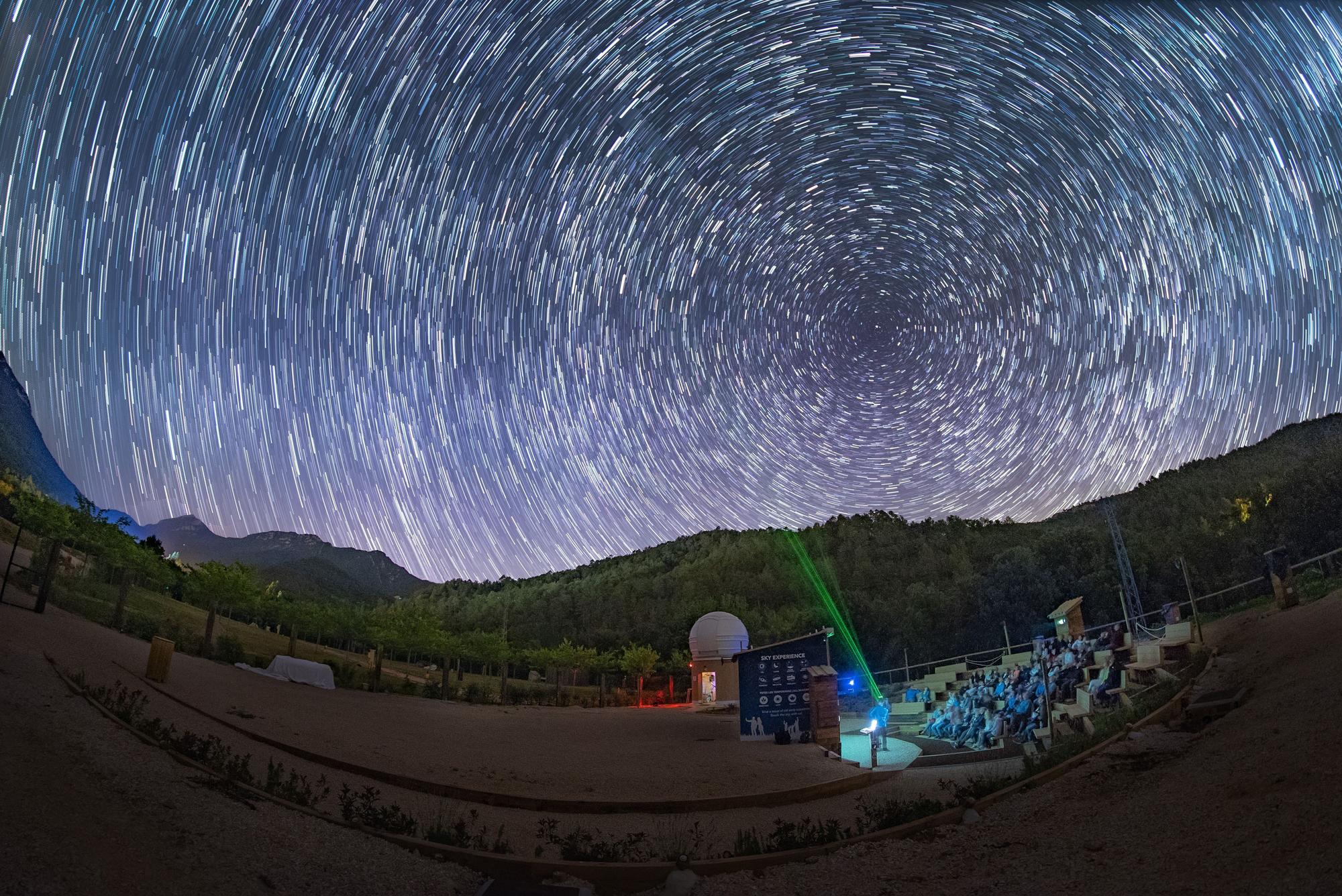Fast Radio Bursts (FRBs) are one of the most powerful and mysterious astronomical phenomena today.
Using a new type of algorithm, observations with the CHIME radio telescope in Canada have revealed evidence of 25 new repeating cosmic signals FRBs in data taken between 2019 and 2021.
Like the gravitational waves (GW) and the gamma ray bursts (GRB), the fast radio bursts (FRB) are one of the most powerful and mysterious astronomical phenomena today. These transient phenomena consist of bursts that emit more energy in a millisecond than the Sun in three days.
Although most explosions last only milliseconds, there have been exceptional cases in which the FRBs are repeated. Although astronomers are still not sure of its causes and opinions vary, specialized observatories and international collaborations have revealed the number of events available for study.
Study in Canada
One of the main observatories is the Canadian Hydrogen Intensity Mapping Experiment (CHIME), a state-of-the-art radio telescope located at the Dominion Radio Astrophysical Observatory (DRAO) in British Columbia (Canada), with which more than 1,000 FRB sources have been detected to date.
Ziggy Pleunis, a postdoctoral researcher at the Dunlap Institute for Astronomy and Astrophysics and lead author of the new study, explained to Universe Today: each FRB is described by its position in the sky and an amount known as its Dispersion Measure (DM). This measurement refers to the delay from low frequencies caused by the high interactions of the burst with matter as it travels through space. In a paper published in August 2021, the CHIME/FRB Collaboration presented the first large-sample FRB catalog containing 536 events detected by CHIME between 2018 and 2019, including 62 outbursts from 18 previously reported repetitive sources.
For this latest study, available on arXiv, Pleunis and colleagues relied on a new clustering algorithm that looks for multiple co-located events in the sky with similar DMs. «We can measure the position in the sky and the dispersion of the fast radio burst with an accuracy that depends on the design of the telescope used,» explains Pleunis.
«the clustering algorithm takes into account all the fast radio bursts that the CHIME telescope has detected and looks for clusters of FRBs that have positions in the sky and dispersion measurements consistent within measurement uncertainties. We then perform various checks to make sure that the bursts in a group are actually coming from the same source.»
Almost double those previously known
Of the more than 1,000 FRBs detected to date, only 29 were identified as repetitive in nature. Furthermore, virtually all of the repetitive FRBs were repeated irregularly. The only exception is FRB 180915, discovered by CHIME researchers in 2018 (and reported on in 2020) and pulsates every 16.35 days. With the help of this new algorithm, the CHIME/FRB collaboration detected 25 new repetitive sources, almost doubling the number available for study. In addition, the team demonstrated some very interesting traits that could provide insight into its causes and characteristics.
Related news
As Pleunis added: «When we carefully counted all of our fast radio bursts and repeating sources we found that only about the 2.6% of all fast radio bursts we discovered are repeating. For many of the new sources we have only detected a few bursts, making the sources quite sluggish. Almost as inactive as sources we’ve only seen once.
«Therefore, we cannot rule out that the sources for which we have only seen a burst so far, will eventually also sample repeated bursts. It is possible that all sources of rapid radio bursts end up repeating, but that many sources are not very active. Any explanation of fast radio bursts should be able to explain why some sources are hyperactive while others are mostly silent.»

